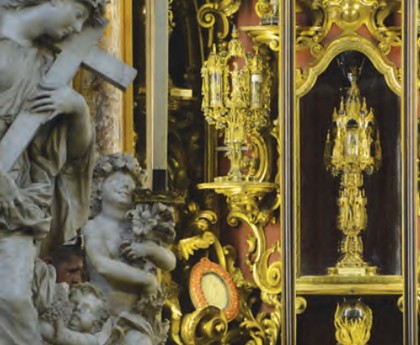“the tongue, even though it had remained buried under ground for thirty two years, was so fresh, red and beautiful as if the very holy father had just died”


“the tongue, even though it had remained buried under ground for thirty two years, was so fresh, red and beautiful as if the very holy father had just died”


On 8 April 1263, when the body of the Saint, in the presence of St. Bonaventura of Bagnorea, the seventh General of the Franciscan Order, was exhumed to be laid in a new coffin in a more dignified tomb in that part of the church which was being built, the body had turned to dust but “the tongue, even though it had remained buried under ground for thirty two years, was so fresh, red and beautiful as if the very holy father had just died”.
This is reported in the “Benignitas” (and it is the oldest evidence) which was written about ten years after the event. There are also very interesting details in a panegyric in praise of St. Anthony that a Franciscan monk held towards the end of the century: not only the monks verified the fact but also many lay people, especially the twelve trustworthy, chosen by the Commune of Padua, who the bore witness to the Pope”.
the “Raimondina” (about 1293) reports “The tongue of the Saint which had been the trumpet of Christ, instrument of the Holy Spirit and bronze bolt of the Tabernacle door was found so integral and sharp that it looked like that of a living man”.